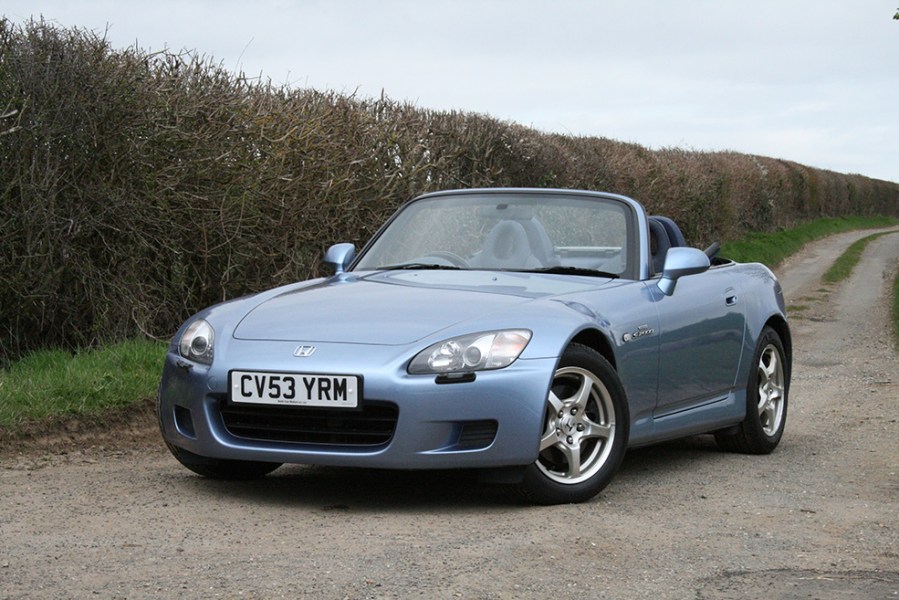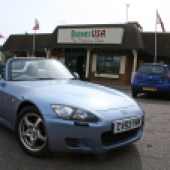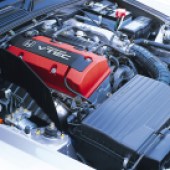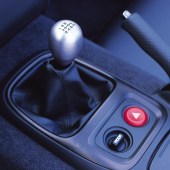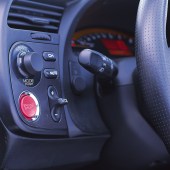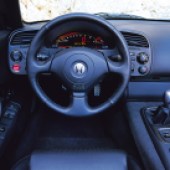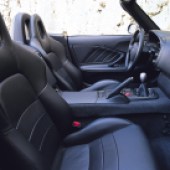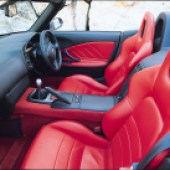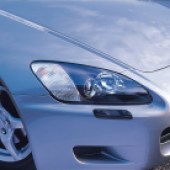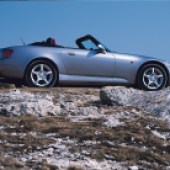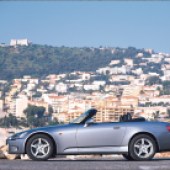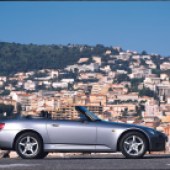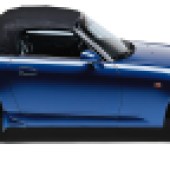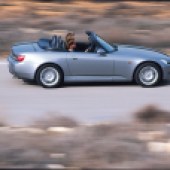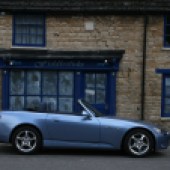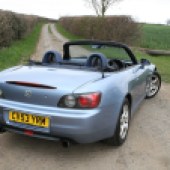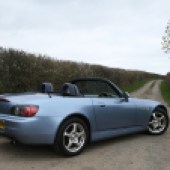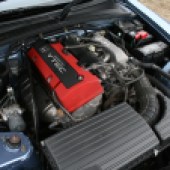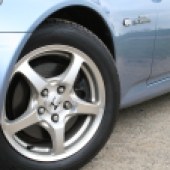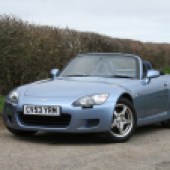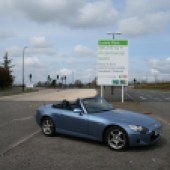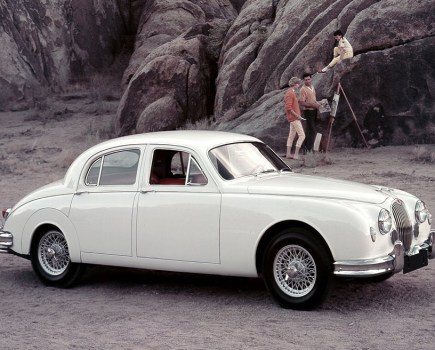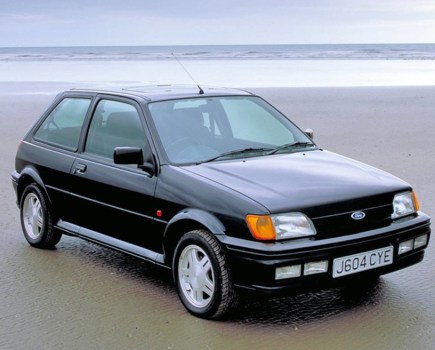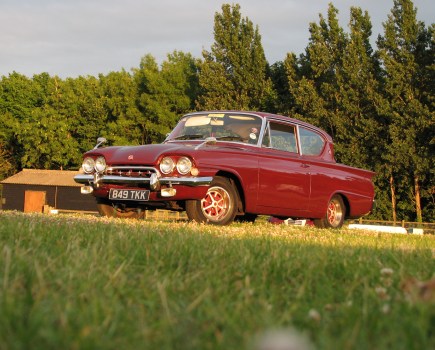There is a lot more to the Honda S2000 than its powerful ‘screamer’ of an engine. It’s a modern classic sports car that’s a joy to drive and is practical to own
Sponsored editorial in association with Lancaster Insurance
When a company like Honda sets out to create something truly special to celebrate its 50 years in business, you know the outcome will be something to talk about – and that was certainly the case when the S2000 was unveiled in 1999.
Following hot on the heels of the technological marvel that was the NSX, the S2000 arrived as a kind of grown-up Mazda MX-5. It took that car’s simple, back-to-basics ethos but injected a good deal more sophistication and nearly twice the power.
At the heart of the S2000 was its engine: a 2.0-litre DOHC four-cylinder that embodied Honda’s accumulated expertise over half a century, with many of the design team drawn from its Formula 1 engine programme. The result was 240bhp – a figure not unusual for a 2.0-litre engine of the era, but achieved without forced induction. Instead, Honda’s clever VTEC variable valve timing system allowed peak power to be delivered at a remarkable 9000rpm.
VTEC provided two cam profiles – one for manageable low-rev driving and one for maximum high-rev power – making the S2000 as compliant in everyday traffic as a humble Civic, while still meeting strict Californian emissions rules. But press on past 6500rpm and the engine’s character changed dramatically: the VTEC kicked in and the rev needle soared towards the 9000rpm redline. This was where the short-throw six-speed gearbox shone, and the grip from double wishbone suspension on all four corners proved invaluable.
The body was designed to be exceptionally rigid, yet the S2000 weighed in at a modest 1260kg, resulting in lively performance: 0-62mph in just 6.2 seconds and a top speed of 150mph. Not bad for a 2.0-litre four-cylinder.
All of this means there really is nothing quite like the S2000. Sure, there are other open two-seaters with similar performance, but none achieve it with such engineering finesse, without resorting to larger engines or turbos. For that reason alone, it deserves its status as a modern classic – before you even consider Honda’s renowned build quality and the elegant styling, which refreshed the traditional roadster shape without leaning on awkward retro cues.
To be fair, Honda did take some time to perfect the S2000’s dynamics – early models struggled with body control and cornering grip to match the engine’s power or the chassis stiffness. These issues were swiftly resolved, and subsequent updates addressed critiques that the car still felt a little distant and lifeless. Further tweaks sought to smooth out the ride, but the S2000 always remained a car defined by its extraordinary powerplant. It’s a car caught between two worlds – not quite the accessible, everyday roadster of a Mazda MX-5, nor the uncompromising driver’s machine of a Lotus Elise – but something wonderfully in between. And that’s exactly why it appeals to so many.
Honda S2000 values
We wouldn’t recommend spending less than around £7000 on an S2000 unless you have some extra budget set aside to address cosmetic and mechanical issues. Between £8000 and £10,000 will generally get you an early example with higher mileage – likely six figures – but still in decent, sound condition. Most S2000s nowadays fall within the £10,000-£20,000 bracket, offering relatively low mileage and increasingly good condition and specification. The best value for money tends to be found near the top end of this range. Cars priced above £20,000 should be in excellent condition throughout, with a full, detailed history and low mileage.
Insurance costs
2001 Honda S2000, £10,000 value.
Example quote: £282.15 or £300.15 with Agreed Value.Quotation supplied by Lancaster Insurance. Tel: 01480 400761
Quote based on a 45-year-old marketing manager, access to another car, no claims or convictions, club member, 3000 miles per year, no modifications, living in SP2 0HL. Disclaimer: Subject to underwriting criteria. An additional charge may be payable. Authorised and regulated by the Financial Conduct Authority.
Bodywork
For once, we won’t be telling you to crawl under the car hunting for structural rust – instead, be vigilant for signs of accident damage. It’s a lightweight, rear-wheel-drive machine with plenty of power, and pre-2006 models lack electronic traction control, making them notoriously easy to spin, especially in wet conditions or on worn tyres. For that reason, it’s worth carrying out the usual checks for panel gaps, overspray and mismatched paint.
The electric roof is generally reliable too, although many don’t sit flush with the bodywork when lowered, as the elastic tensioning straps tend to weaken with age. Replacement Honda S2000 roofs are available to restore the hood’s neat fold. If the roof rattles against the windscreen at speed, it’s often due to worn striker plates, which can be easily swapped for later parts believed to be made from harder metal and cost around £80 for genuine Honda parts.
Engine and transmission
Considering its impressive specification, the Honda engine is surprisingly free of major issues, with most faults being niggly rather than fundamental. A faulty MAP (Manifold Absolute Pressure) sensor can cause intermittent rough running, ‘kangarooing’ at low speeds and misfires in the VTEC rev range, but it is easily cleaned or replaced for circa-£35. Corroded wiring to the ECU can result in rough running problems that are often tricky to diagnose. Other issues may include failed oxygen sensors, intake air temperature sensors and injectors – all of which are straightforward to fix and can be tackled as DIY jobs. A noisy cam chain is usually down to a failing tensioner, a genuine or good quality item well worth investing in to protect your engine, and costing around £120.
The S2000’s gearbox was developed specifically for the car, designed to be light and narrow so the engine and box could be mounted as far back in the bodyshell as possible. It features lightweight gears working in harmony with a similarly light engine flywheel. While this might sound like a recipe for fragility, it is generally a reliable unit – although some hard-driven cars have experienced problems with synchromesh on the higher gears. A few owners have reported that heavy clutch action was cured by carefully greasing the release fork through the aperture in the bellhousing, using grease applied to the end of a piece of wire.

Suspension, steering and brakes
While the Honda S2000 generally enjoys a very positive reputation for its dynamics and handling, the suspension remains one of the car’s few Achilles’ heels. Honda describes it as an ‘in-wheel’ design, due to the components being shaped so that most of the structure fits within the standard 16-inch wheel – allowing for a lower bonnet and rear deck.
When in standard form and all components are functioning correctly, the result is superbly balanced handling and a lovely taut feel. Unfortunately, many cars suffer from seized wishbone bolts where they pass through the centre of the metalastic bushes that connect them to the bodyshell. This issue only becomes apparent when a wheel alignment is required – and the S2000 is very sensitive to correct alignment. At that point, you’ll find the bolts are immovable, and Honda supplies only the complete arm, not the bush separately. Many keen owners and specialists apply anti-seize grease to the bolts to prevent this problem. At the front end, the castor or ‘compliance’ bushes can split, which leads to an MoT failure. Again, Honda doesn’t sell the bush alone, but aftermarket parts are available.
The S2000 is highly sensitive to correct tyres, with the original Bridgestone ES02JZ specially developed for the car. These were replaced in 2004 by Bridgestone RE050s, which remain well regarded and serve as a good substitute since the originals are no longer available.
To reduce parasitic drag from an engine-driven hydraulic pump, Honda opted for electric power steering on the S2000. Derived from the NSX setup, it varies the level of assistance according to road speed and employs a variable gearing ratio to provide progressively quicker steering as the wheel is turned further. It’s a reliable system, and a dashboard warning light will alert you to faults. The most common cause of this warning is a faulty signal from the steering torque sensor. While the sensor itself can fail, it’s more likely that dried grease and accumulated dirt within the sensor cause erroneous readings – cleaning the sensor and applying fresh high-temperature grease usually resolves the problem at minimal cost. However, if the motor or the EPAS control unit is faulty, repairs can be expensive.
As for brakes, the S2000 is fitted with 11.8-inch vented discs at the front and 11-inch solid discs at the rear, which are well up to the car’s performance. If a car has uprated brakes, ask why – it could indicate frequent track use. Service parts are reasonably priced for a car of this calibre: a set of front pads costs around £35, although front discs are pricier at about £75 each.
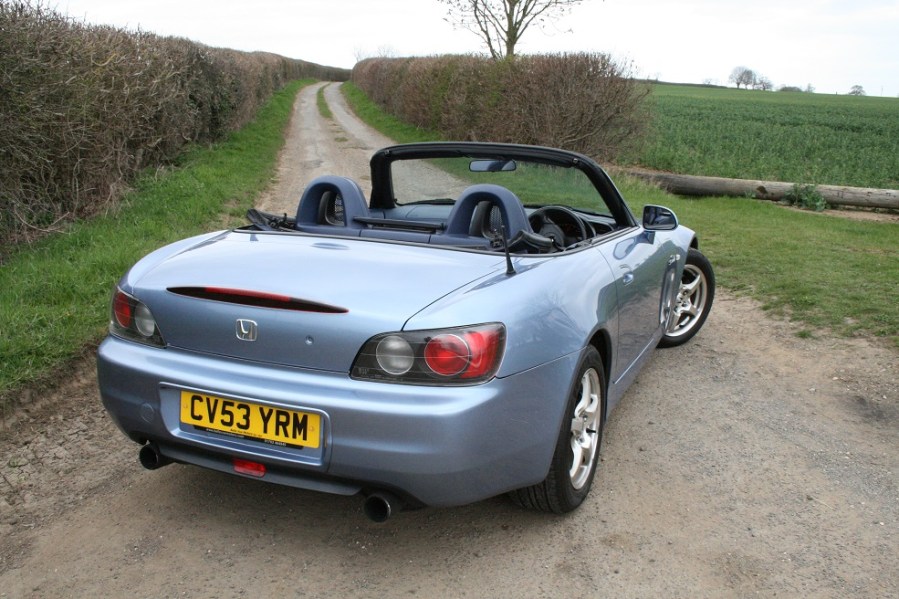
Interior, trim and electrics
It’s a Honda, which means the interior is somewhat bland and a little ‘plasticky’ but impeccably well assembled – so if you come across any loose or rattling trim, it usually means someone’s been tinkering inside, likely fitting aftermarket stereos or alarms. If you spot an upgraded stereo, make sure it still works with the original remote controls. What might sound like a squeaking dashboard is often the bonnet release catch or the rear-view mirror mount. The leather seats are very hard-wearing, though the driver’s seat material can start to wear thin on high-mileage examples. Early models featured a plastic rear screen in the hood which can crack, so check this carefully, along with the hood itself for any tears or splits. That said, a new hood isn’t a major expense on an otherwise solid car – expect to pay no more than £1000 for a high-quality mohair one, around £550 for a like-for-like replacement of the original vinyl and half that for a decent used roof, but obviously factor in the fitting labour if you won’t be doing it yourself.
If you find a puddle of water in the passenger footwell, don’t immediately assume the roof is leaking – it’s quite likely the condensation drain from the air conditioning unit has been dislodged. It’s an easy fix to slip it back into place.
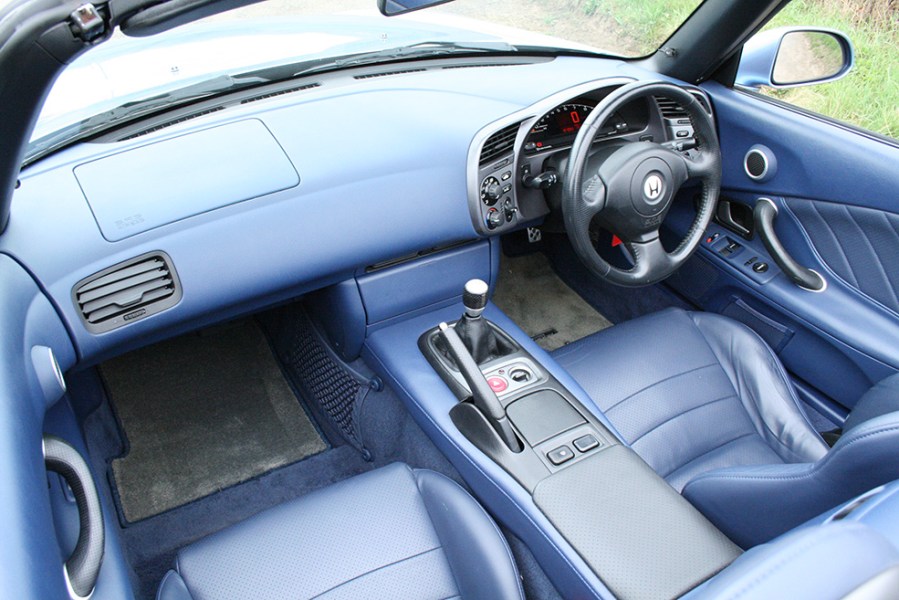
Honda S2000: our verdict
The S2000 is very much a ‘love it or hate it’ kind of car. Some will struggle with how hard the engine needs to be worked to truly come alive, and with the relatively uncompromising nature of the suspension – the Honda is more a bespoke sports car than an easygoing roadster. Yet that’s precisely why it’s always had a devoted following. Being a Honda, it can be used regularly with minimal sacrifice or concern over reliability, even at high mileage, provided its specific servicing requirements are met. Despite its short-travel suspension and reputation for twitchy handling, it remains quiet, economical, refined and well equipped for everyday use or longer trips. Its unique character – a screaming engine, close-ratio gearbox and responsive chassis – also make it ideal for weekend fun, chasing the sunshine and the best roads. And, as it’s a Honda, there’s no reason it can’t perform both roles. Prices are on the rise now and it’s firmly entering modern classic status, so if you buy a good example and look after it, it should prove a sensible indulgence.
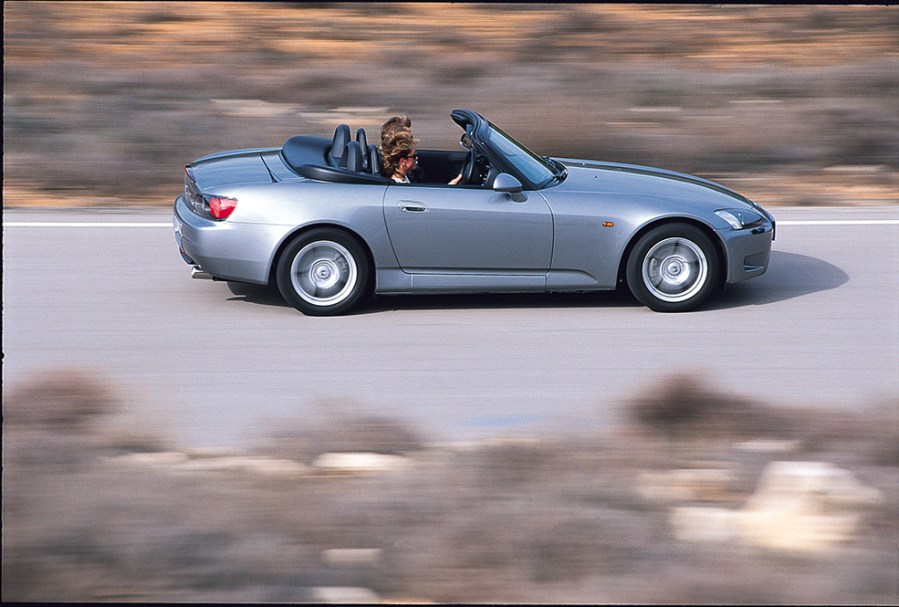
Honda S2000 timeline
1999
Honda S2000 launched for the 2000 model year. 240bhp 2.0-litre DOHC VTEC engine, six-speed manual gearbox, limited slip differential as standard. Four-wheel double-wishbone suspension and 16-inch wheels. Wind deflector and aluminium hard top are optional extras.
2001
Wind deflector becomes standard equipment and a digital clock is added to the centre console display.
2002
Suspension and steering changes made to improve the S2000’s steering feel, turn-in response, rear-end grip and body control. The hood gains a glass rear window with a heating element. Improved stereo system and leather gearknob and console covers added to the interior.
2004
A major update results in the ‘Mk2’ S2000. 17-inch wheels and new tyres are fitted. Suspension is retuned with new spring and damper rates and revised geometry to improve stability when cornering. The chassis sub-frame is redesigned to increase rigidity and the gearbox received carbon-fibre synchromesh rings. New front and rear bumpers, restyled headlamp assemblies, LED tail lights and oval exhaust tip trims complete the cosmetic facelift.
2006
Electronic fly-by-wire throttle introduced, allowing for optional traction control. Head restraints move to a solid design without the central hole as found on earlier cars.
2008
Traction control becomes standard fitment, and further revised springs and dampers introduced to improve ride quality.
2009
UK sales of the Honda S2000 end with the GT spec model (with a hard top and an external temperature gauge as standard) and then the Ultimate Edition and GT Edition limited run cars, both featuring unique interior trim and cosmetic details on mechanically standard cars. Total production was 110,000 examples.

